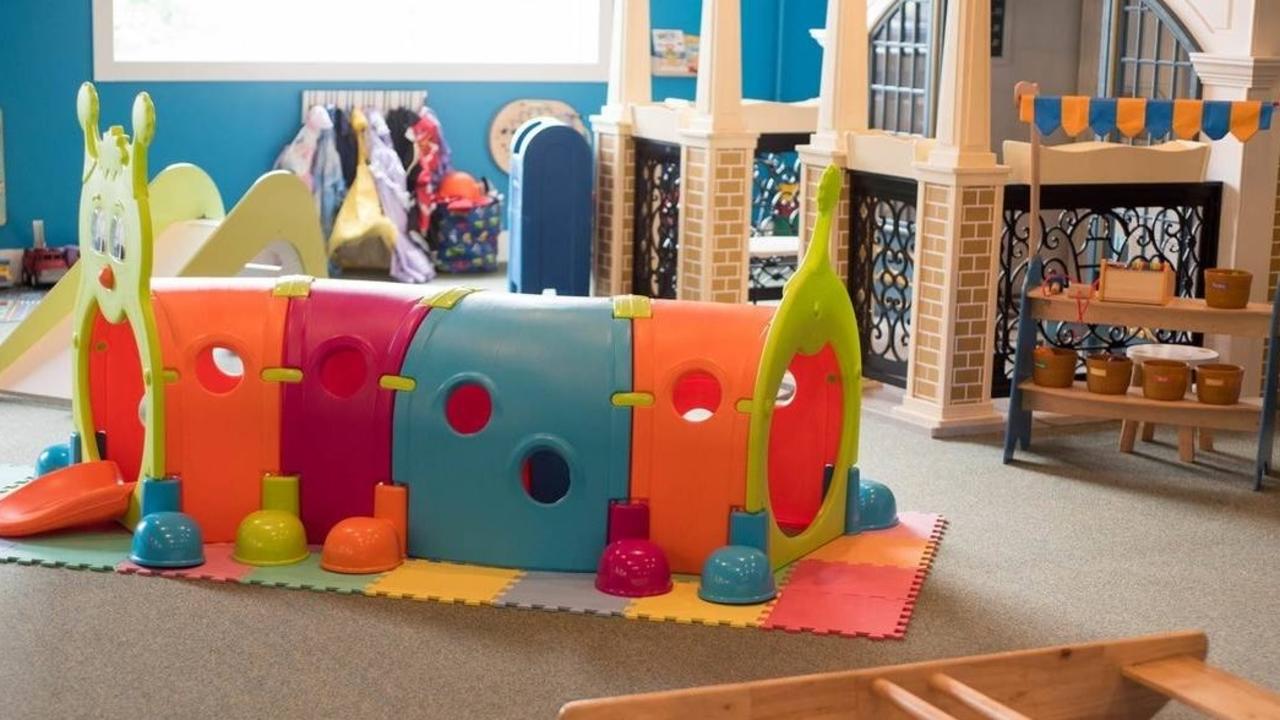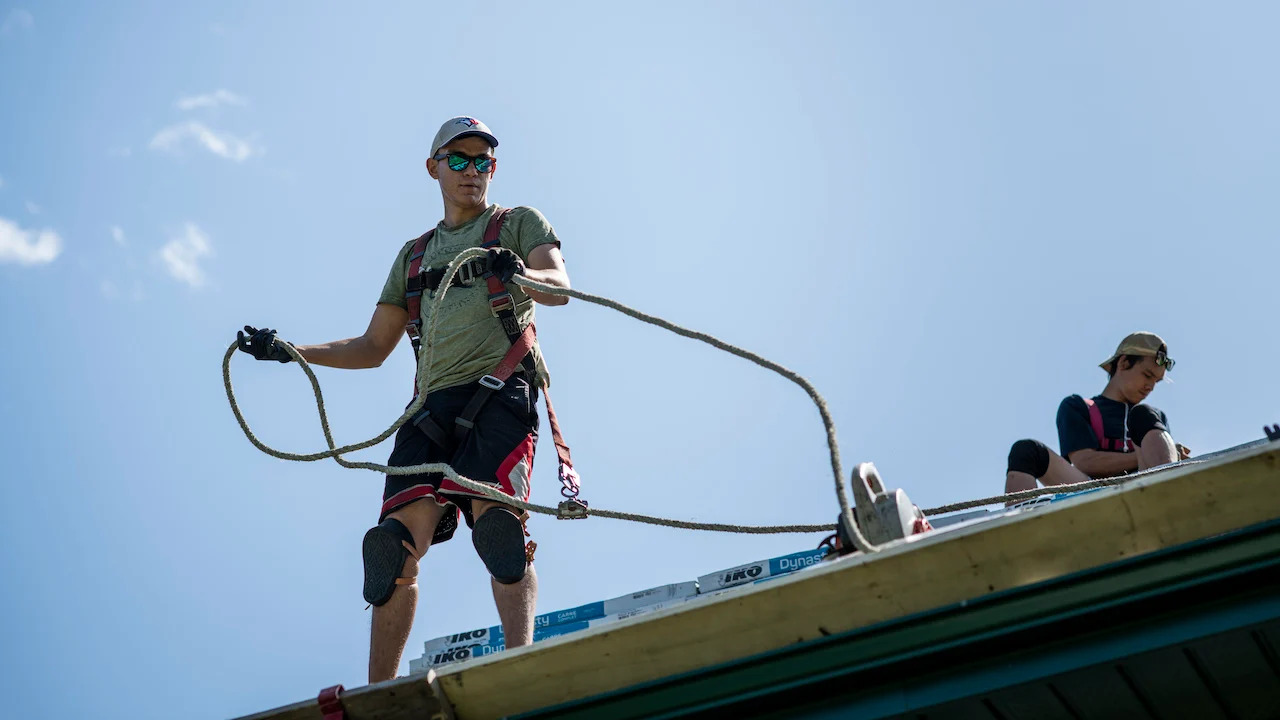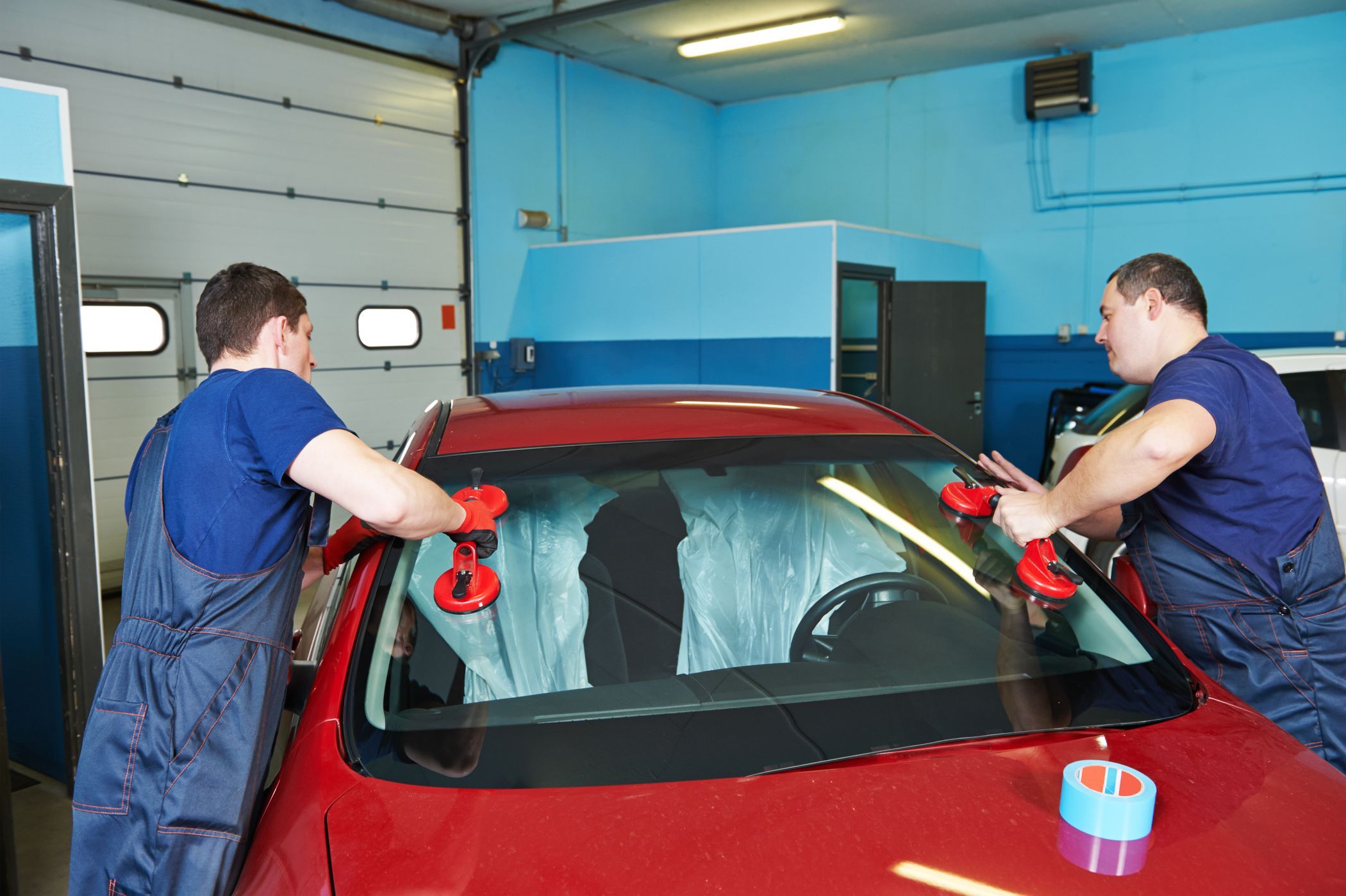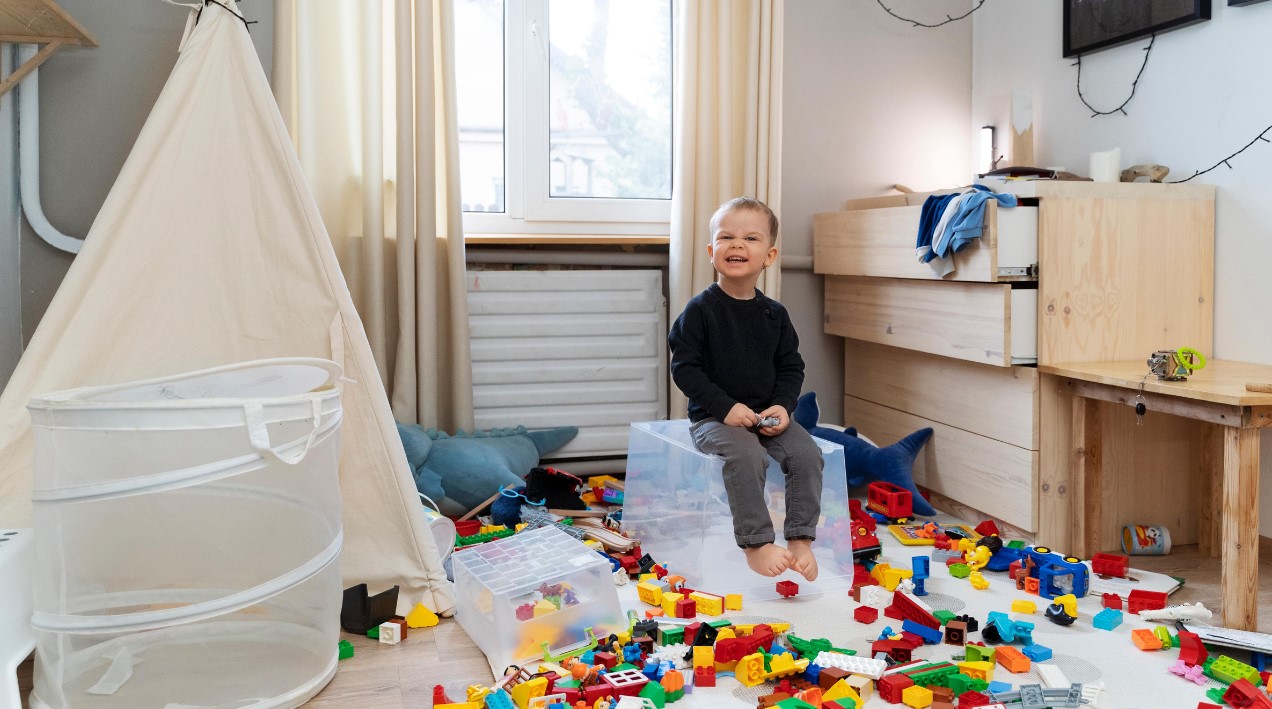Home>Garden Essentials>How To Start A Play Area Business


Garden Essentials
How To Start A Play Area Business
Modified: March 7, 2024
Learn how to start a successful garden play area business. From planning and design to marketing and operations, get the insights you need to thrive in this lucrative industry.
(Many of the links in this article redirect to a specific reviewed product. Your purchase of these products through affiliate links helps to generate commission for Storables.com, at no extra cost. Learn more)
Introduction
Starting a play area business can be an exciting and fulfilling venture for garden enthusiasts. Whether you have a passion for landscaping, design, or simply enjoy spending time outdoors, establishing a play area business allows you to combine your love for gardens with creating an enjoyable space for children to play and explore.
A play area business offers a range of benefits to both children and parents. It provides a safe and stimulating environment where kids can engage in physical activity, develop social skills, and foster their imagination. At the same time, it offers parents the opportunity to spend quality time with their children while knowing they are in a secure and supervised setting.
To successfully launch your play area business, thorough research, planning, and strategic implementation are crucial. This article will guide you through the step-by-step process of starting a play area business, ensuring that you set a strong foundation for success.
So, let’s dive in and explore the key steps you need to take in order to bring your play area business to life.
Key Takeaways:
- Starting a play area business involves thorough research, identifying the target market, and creating a unique selling proposition to provide a safe and engaging space for children to play and explore.
- Choosing the right location, designing a captivating play area layout, and providing exceptional customer service are essential for the success of a play area business, ensuring a positive and memorable experience for families.
Read more: How To Start An Insulation Business
Step 1: Research and Planning
Before diving into starting your play area business, it’s important to conduct thorough research and develop a solid plan. This step will help you gain a deeper understanding of the market, identify potential challenges and opportunities, and lay the groundwork for a successful venture.
Start by researching the local demand for a play area business in your area. Look into the demographics of families in your target market and assess the level of competition. This will help you determine the viability and potential profitability of your business.
Next, identify the target age group for your play area. While some businesses cater to a broad range of ages, others may specialize in specific age groups, such as infants, toddlers, or school-age children. Knowing your target market will help you tailor your play area and marketing efforts accordingly.
Consider visiting existing play areas or conducting online research to gather ideas and inspiration for your own facility. Take note of the layout, equipment, and amenities offered at other play areas to better understand what works well and what areas could be improved upon.
Once you have a solid understanding of the market and your target audience, it’s time to develop a comprehensive business plan. Your business plan should outline your mission, vision, goals, and strategies for achieving success. It should also include a detailed financial plan, outlining your startup costs, projected expenses, and expected revenue.
In your business plan, consider factors such as the size and location of your play area, the types of activities and equipment you plan to offer, and any additional services you may provide, such as party hosting or educational programs. This will help you create a unique selling proposition and set yourself apart from competitors.
As part of your research and planning phase, it’s also important to familiarize yourself with any legal and regulatory requirements for operating a play area business. This may include obtaining licenses or permits, ensuring compliance with safety standards, and obtaining appropriate insurance coverage.
Remember, the research and planning phase is essential for setting a strong foundation for your play area business. Take the time to gather information, analyze the market, and create a comprehensive plan that will guide you through the rest of the startup process. By doing so, you will increase your chances for success and ensure a smooth transition into the next steps of starting your play area business.
Step 2: Identify Your Target Market
Identifying your target market is a crucial step in starting a play area business. Understanding the needs, preferences, and behaviors of your potential customers will help you tailor your offerings and marketing strategies to attract and retain them.
To begin, consider the age range and interests of the children you want to cater to. Are you targeting toddlers, preschoolers, or older school-age children? Each age group will have different needs and preferences when it comes to play.
Think about the demographics of your target market. Are they primarily families with young children, or do you want to attract adults and children of all ages? Understanding the demographics will help you align your offerings and create a welcoming environment that appeals to your target audience.
Another important consideration is the psychographics of your target market. What are their interests, values, and lifestyle preferences? Do they prioritize educational experiences, physical activity, or a combination of both? By understanding the psychographics of your target market, you can tailor your play area to meet their specific needs and interests.
In addition to the children, it’s important to consider the parents or caregivers. What are their preferences and concerns when it comes to a play area? Are they looking for a safe and secure environment, educational opportunities, or a chance to socialize with other parents? Understanding the needs and desires of the parents will help you create a play area experience that is enjoyable and appealing to both children and their caregivers.
To gather insights about your target market, conduct surveys, interviews, or focus groups with parents and children in your community. Ask questions about their preferences, pain points, and what they would like to see in a play area. This qualitative research can provide valuable information that will guide your decision-making process.
Additionally, make use of demographic data and market research reports to gain a deeper understanding of your target market. These resources can provide valuable insights into population trends, spending habits, and preferences.
Once you have a clear understanding of your target market, you can begin tailoring your play area to meet their needs. From the layout and design of the space to the selection of equipment and activities, every aspect of your play area should be geared towards creating a fun and engaging experience for your target audience.
By identifying and understanding your target market, you can effectively differentiate your play area business and cater to the specific needs and preferences of your customers. This will position your business for success and help you attract and retain a loyal customer base.
Step 3: Define Your Unique Selling Proposition
In a competitive market, it’s essential to define your unique selling proposition (USP) to differentiate your play area business and attract customers. Your USP is what sets you apart from your competitors and gives customers a compelling reason to choose your play area over others.
To develop your USP, start by identifying the key attributes or features that make your play area business unique. Consider the following questions:
1. What differentiates your play area from others in the market? Is it the size of your facility, the range of activities offered, or the quality and safety standards you adhere to?
2. Are there any specialized services or amenities that you provide which are not typically found in other play areas? Examples may include sensory play areas, dedicated toddler zones, or interactive learning stations.
3. How do you create a memorable and engaging experience for children and their parents? Do you offer themed play areas, interactive exhibits, or regular events and workshops?
Once you have identified your unique features, you can use them to create a compelling value proposition. Consider the benefits that your play area offers to customers. Does it provide a safe and clean environment? Does it promote physical fitness, creativity, or socialization? Emphasize these benefits in your USP to resonate with your target market.
Your USP should be clear, concise, and easy to communicate. It should highlight what makes your play area business stand out and why customers should choose you. For example, “ABC Play Area: Where Imagination Meets Adventure” emphasizes the combination of creativity and active play that sets the business apart.
To validate your USP, consider obtaining feedback from parents and children who have visited your play area. Ask them what they found most appealing or unique about their experience and incorporate their feedback into your USP. This will help you ensure that your messaging aligns with the actual value you provide to your customers.
Remember to consistently communicate your USP across all marketing materials and touchpoints. Whether it’s your website, social media profiles, or signage within your play area, make sure your USP is front and center. This will help create brand recognition and attract customers who resonate with your unique offerings.
By defining your USP, you create a distinct identity for your play area business and position yourself as the go-to destination for families in your community. Your USP becomes a powerful marketing tool that helps differentiate you from your competitors and attract a loyal customer base.
Step 4: Choose a Suitable Location
Choosing the right location for your play area business is vital to its success. The location not only affects your accessibility to customers but also plays a role in attracting your target market and contributing to a positive customer experience. Here are some essential considerations when selecting a suitable location for your play area:
1. Accessibility: Opt for a location that is easily accessible for your target market. Consider proximity to residential areas, schools, parks, and other places where families with children frequent. A central location with good transportation links can help increase foot traffic and attract a larger customer base.
2. Size and Space: Assess the size of the space and determine if it meets your business requirements. Consider the number and size of play areas, equipment, seating, and other amenities you plan to have. Ensure that the space can comfortably accommodate the number of children and parents you expect to cater to at peak times.
3. Safety and Security: Safety is of utmost importance in a play area. Ensure that the location you choose meets safety standards and regulations. Adequate lighting, surveillance cameras, and secure fencing are crucial elements to provide a safe environment for children to play. If possible, choose a location with ample parking for families visiting your play area.
4. Competition: Research the competition in the area before finalizing a location. Assess the proximity of other play areas or similar businesses. While some degree of competition can be healthy, too much saturation in the market may make it challenging to attract customers. Look for a location that strikes a balance between accessibility and competition.
5. Amenities and Infrastructure: Consider the availability of essential amenities and infrastructure in the vicinity. Access to restrooms, water fountains, and seating areas can enhance the customer experience. Additionally, check if the location has necessary utilities like electricity and water supply that can support the operation of your play area.
6. Lease or Purchase: Evaluate whether leasing or purchasing a property is more suitable for your business. Leasing allows for flexibility but may come with limitations imposed by the property owner. Purchasing a property offers stability, but it requires a significant investment upfront. Consider your long-term goals and financial capabilities when making this decision.
7. Future Expansion: Think about the potential for future growth and expansion. Consider whether the location has room for adding new play areas or expanding your business offerings. This will allow you to accommodate a growing customer base and adapt to changing market trends.
Once you have assessed these factors and identified potential locations, visit the sites in person. Take note of the neighborhood, nearby amenities, and the overall ambiance of the area. Imagining the experience from a customer’s perspective will help you make an informed decision.
Choosing a suitable location requires careful consideration of factors that align with your target market and business objectives. By selecting the right location, you can position your play area business for success and create a welcoming environment that attracts families and keeps them coming back for more.
Read more: How To Start A Furniture Business
Step 5: Obtain Necessary Licenses and Permits
Obtaining the necessary licenses and permits is a crucial step in starting a play area business. These legal requirements ensure that your business meets safety standards, operates within the law, and provides a secure environment for children to play. Here are some key licenses and permits you may need to obtain:
1. Business License: Start by obtaining a general business license or permit from your local government or municipality. This license allows you to legally operate your play area business and ensures that you comply with local regulations.
2. Health and Safety Permits: Ensure that your play area meets health and safety guidelines to maintain a safe environment for children. Depending on your location, you may need to obtain permits related to sanitation, ventilation, fire safety, and emergency preparedness. Check with your local health department to determine the specific requirements for your play area.
3. Zoning Permits: Verify that your chosen location is zoned for a play area business. Different areas have different zoning regulations, and some may have restrictions on commercial activities in certain neighborhoods or specific requirements for child-oriented businesses. Consult with your local zoning board or planning department to determine if your play area is allowed in your desired location.
4. Building Permits: If you plan to make structural changes or renovations to your play area space, you may need to obtain building permits. This applies especially if you are constructing new play structures or modifying existing ones. Building permits ensure that your play area meets construction and safety standards.
5. Insurance Coverage: It is essential to obtain appropriate insurance coverage to protect your business and customers. Liability insurance, in particular, is vital as it safeguards against potential accidents or injuries that may occur on your premises. Consult with an insurance agent specializing in businesses catering to children to determine the coverage needed for your play area.
6. Music Licensing: If you plan to play music in your play area, ensure that you obtain the appropriate music licensing. This ensures that you comply with copyright laws and compensate artists for the use of their music. Organizations such as ASCAP, BMI, and SESAC provide licenses for public performance of music.
7. Food Service Permits: If you plan to offer food or beverages at your play area, you may need to obtain food service permits. This ensures that you meet the health and safety standards specific to the preparation and handling of food. Contact your local health department or food service agency to determine the requirements for obtaining and maintaining these permits.
To understand the specific licenses and permits you need, research local regulations and consult with relevant government agencies or industry associations. Note that requirements may vary depending on your location, so it is important to familiarize yourself with the rules and regulations specific to your area.
Keep in mind that maintaining proper licenses and permits is an ongoing responsibility. Stay up to date with renewals and any changes in regulations to ensure that you operate your play area business legally and safely.
By obtaining the necessary licenses and permits, you demonstrate your commitment to maintaining a safe and compliant play area for children. This not only protects your business but also provides peace of mind to parents who entrust their children’s well-being in your care.
Research your target market and location thoroughly before starting your play area business. Understand the needs and preferences of your potential customers to tailor your offerings accordingly.
Step 6: Design and Layout of the Play Area
The design and layout of your play area play a crucial role in creating an engaging and enjoyable experience for children. Careful planning and attention to detail in designing the space can enhance the play opportunities, safety, and aesthetic appeal. Here are some key considerations when designing and laying out your play area:
1. Age-Appropriate Zones: Segment your play area into age-appropriate zones to cater to different developmental stages. Create designated areas for infants, toddlers, preschoolers, and older children. Each zone should have equipment and activities suitable for the respective age group, ensuring a safe and stimulating environment for all children.
2. Safety Measures: Safety should be a top priority in your play area design. Ensure that the equipment and play structures meet safety standards and guidelines. Consider factors such as fall height, impact-absorbing surfaces, and proper spacing between play elements. Install safety gates, protective barriers, and age-appropriate signage to guide and inform parents and children about potential hazards.
3. Flow and Circulation: Plan the layout of your play area to allow for smooth flow and circulation of children and parents. Avoid congested areas and create logical pathways between play zones. Ensure that there is ample space for children to move around and that parents can easily supervise their children from various vantage points.
4. Theme and Visual Appeal: Consider incorporating a theme or cohesive design concept that adds a sense of excitement and wonder to the play area. Whether it’s a jungle adventure, a space exploration theme, or a whimsical garden motif, the theme should be carried throughout the play area to create a visually appealing and immersive experience for children.
5. Variety of Play Experiences: Offer a diverse range of play experiences and activities to cater to different interests and abilities. Include climbing structures, slides, swings, interactive play panels, sensory play areas, and imaginative play zones. Incorporate opportunities for physical, cognitive, social, and sensory development to engage children of all abilities.
6. Comfort and Amenities: Provide seating areas for parents to relax and observe their children. Consider amenities such as shade structures, water fountains, and restrooms to enhance the comfort and convenience of visitors. Ensure that seating areas are strategically placed to allow parents to have a clear view of their children while they play.
7. Aesthetics and Landscaping: Enhance the ambiance of your play area with attractive landscaping elements. Use child-friendly plants, colorful flowers, and age-appropriate artwork to create a visually appealing and inviting environment. Incorporate natural elements such as trees, shrubs, and grass to provide shade and add a touch of nature to the play area.
8. Accessibility: Make sure your play area is accessible to all children, including those with physical disabilities or special needs. Incorporate inclusive play equipment, ramps, and accessible pathways to provide equal play opportunities for all children.
When designing and laying out your play area, it’s essential to balance safety, creativity, and functionality. Consider seeking input from parents, child development experts, and even children themselves to ensure that the design and layout meet the needs and preferences of your target market.
By creating a well-designed and thoughtfully laid out play area, you provide a welcoming and engaging space for children to play, explore, and learn. This not only enhances their experience but also contributes to the success and reputation of your play area business.
Step 7: Select Suitable Equipment and Supplies
Selecting suitable equipment and supplies is a critical step in creating a captivating and engaging play area. The right selection of equipment and supplies will not only provide children with a wide variety of play experiences but also contribute to their safety, development, and enjoyment. Here’s what you need to consider when choosing equipment and supplies for your play area:
1. Safety Standards: Ensure that all equipment and supplies meet safety standards and regulations. Look for certifications and labels indicating compliance with safety guidelines. Conduct thorough research on manufacturers and suppliers to ensure their products are of high quality and tested for safety.
2. Age Appropriateness: Consider the age range of your target market and choose equipment and supplies that are suitable for each age group. Select items that align with children’s developmental stages, abilities, and interests. Toddler-friendly equipment, such as soft play structures and sensory items, should be included for the younger age group, while challenging structures and interactive play elements can be introduced for older children.
3. Durability and Maintenance: Opt for equipment and supplies that are durable and require minimal maintenance. Select materials that can withstand frequent use, weather conditions, and regular cleaning. This will ensure the longevity and cost-effectiveness of your play area investments.
4. Variety of Play Experiences: Offer a diverse range of play experiences through the selection of equipment and supplies. Include climbing structures, swings, slides, balance beams, sandboxes, water play features, and interactive games. Incorporate elements for physical, imaginative, social, and cognitive play, catering to the different needs and preferences of children.
5. Inclusive and Accessible Equipment: Make sure your play area includes equipment that is inclusive and accessible to all children. Install ramps, wide pathways, and tactile or sensory elements for children with mobility impairments or sensory sensitivities. Ensure that children of all abilities can actively engage and enjoy the play area.
6. Creative and Imaginative Play: Include equipment and supplies that encourage imaginative play and creativity. Playhouses, pretend play props, musical instruments, art stations, and storytelling areas can stimulate children’s creativity and promote imaginative play scenarios.
7. Educational Elements: Incorporate educational elements within the play area. Include puzzles, learning games, interactive panels, and literary nooks to promote cognitive development and early literacy skills. Integrate educational concepts related to math, science, language, and nature to enrich the play experience.
8. Comfort and Hygiene: Consider providing seating areas, shaded zones, and cleanliness amenities for parents and caregivers. Benches, picnic areas, and seating with a clear line of sight to the play area allow parents to relax while supervising their children. Install hand sanitizing stations, waste bins, and well-maintained restroom facilities for the convenience and cleanliness of visitors.
When selecting equipment and supplies, it is vital to strike a balance between safety, creativity, and functionality. Consider seeking recommendations and feedback from parents, child development experts, and play area consultants. Their insights can help you make informed decisions that align with the needs and preferences of your target market.
By selecting suitable equipment and supplies, you create a captivating and inclusive play area that encourages children’s growth, development, and enjoyment. This, in turn, contributes to the success and reputation of your play area business.
Step 8: Hire and Train Staff
Hiring and training the right staff is crucial to the success of your play area business. Your staff members are the face of your business, responsible for ensuring a safe, enjoyable, and engaging experience for children and their parents. Here’s how you can effectively hire and train your staff:
1. Determine Staffing Needs: Assess your play area’s operational requirements to determine the number of staff members needed. Consider factors such as the size of your play area, the expected number of visitors, and the variety of activities offered. Create job descriptions outlining the roles and responsibilities of each position.
2. Seek Qualified Candidates: Advertise job openings through various channels to attract qualified candidates. Reach out to local universities, childcare centers, and online job platforms. Screen resumes and conduct interviews to assess candidates’ experience, skills, and dedication to working with children. Consider conducting background checks and reference checks before making a final hiring decision.
3. Experience and Training: Look for candidates with experience working with children, preferably in a similar play area or childcare setting. Prior experience indicates their understanding of child development, safety protocols, and the ability to engage with children effectively. Additionally, provide thorough training to ensure that all staff members are equipped with the necessary skills and knowledge to perform their roles effectively.
4. CPR and First Aid Certification: Require all staff members to obtain CPR and first aid certifications. This ensures that they can respond appropriately to any emergencies or injuries that may occur in the play area. Consider providing opportunities for staff members to attend training and obtain certifications if they haven’t already.
5. Customer Service Skills: Look for staff members who possess strong interpersonal and communication skills. They should be friendly, approachable, and able to provide excellent customer service to parents and children. Assess candidates’ ability to handle inquiries, resolve conflicts, and create a positive and welcoming environment for all visitors.
6. Teamwork and Adaptability: Emphasize the importance of teamwork and adaptability during the hiring process. Look for candidates who can work well within a team, collaborate effectively, and handle unexpected situations calmly and efficiently. A flexible and adaptable team ensures smooth operations and a positive experience for visitors.
7. Ongoing Training and Development: Implement a comprehensive training program for new staff members to ensure they have a solid understanding of your play area’s policies, procedures, and safety protocols. Offer ongoing training opportunities to keep staff members updated on best practices, industry trends, and new developments in child development and play area management. Encourage regular communication and feedback to foster a culture of continuous learning and improvement.
8. Employee Engagement and Recognition: Create a positive work environment that promotes employee engagement and recognition. Provide opportunities for staff members to contribute ideas, offer feedback, and participate in decision-making processes. Recognize and reward their efforts and achievements to enhance motivation and job satisfaction.
By hiring and training the right staff, you create a team that is knowledgeable, passionate, and dedicated to creating a positive play experience for children and their parents. Investing in your staff’s development ensures that they are equipped to handle various situations and consistently deliver exceptional customer service.
Remember, your staff members are an integral part of your play area business, and their professionalism and expertise will contribute to its overall success and reputation.
Read more: How To Start A Woodworking Business
Step 9: Implement Effective Marketing Strategies
Implementing effective marketing strategies is essential for attracting customers and creating awareness of your play area business. By developing a comprehensive marketing plan and utilizing various channels and tactics, you can reach your target market and establish a strong presence in the community. Here are some key steps to take when implementing your marketing strategies:
1. Identify Your Target Audience: Refine your target audience based on the research conducted earlier. Identify parents, caregivers, and organizations that align with your target market. Consider demographics, psychographics, and interests to tailor your marketing messages and tactics specifically to your ideal customers.
2. Define Your Unique Selling Proposition (USP): Showcase your unique selling proposition in your marketing materials. Highlight the key differentiators of your play area, emphasizing the benefits it provides to customers. Whether it’s your engaging activities, safe environment, or educational opportunities, clearly communicate what sets your play area apart from competitors.
3. Create a Strong Online Presence: Establish a professional website that showcases your play area’s offerings, highlights customer testimonials and positive reviews, and provides essential information such as operating hours, location, and pricing. Optimize your website for search engines by incorporating relevant keywords and regularly publishing valuable content related to children’s play and development.
4. Leverage Social Media Platforms: Utilize social media platforms such as Facebook, Instagram, and Twitter to engage with your target audience. Share updates, announcements, photos, videos, and special promotions to create excitement and generate interest. Encourage customers to share their experiences and tag your play area in their posts to increase your online visibility and reach.
5. Collaborate with Local Influencers: Partner with local bloggers, community leaders, influencers, and parenting groups who have a strong following in your area. Offer them free or discounted visits to your play area in exchange for honest reviews and social media mentions. Their positive reviews and recommendations can significantly boost your play area’s visibility.
6. Host Special Events and Promotions: Organize special events, themed parties, holiday celebrations, or workshops that cater to your target market. These events not only attract new customers but also create a memorable and engaging experience for existing customers. Collaborate with neighboring businesses, schools, and community organizations to cross-promote and expand your reach.
7. Implement Referral Programs: Encourage customers to refer their friends and family to your play area by implementing a referral program. Offer incentives such as discounts, free visits, or exclusive access to special events for each new customer referred. Word-of-mouth recommendations can be powerful in attracting new customers.
8. Engage in Local Partnerships: Forge strategic partnerships with complementary businesses in your community. Collaborate with local toy stores, children’s boutiques, or family-friendly restaurants to create cross-promotion opportunities. Consider offering joint promotions, hosting events together, or sharing marketing materials to increase visibility and reach a wider audience.
9. Monitor and Measure Results: Regularly track and analyze the effectiveness of your marketing efforts. Monitor website traffic, social media engagement, customer feedback, and sales data to gauge the success of your strategies. Refine your tactics based on the insights gained and make data-driven decisions to optimize your marketing campaigns.
Implementing effective marketing strategies helps your play area business gain visibility, attract customers, and build a strong brand presence in the market. By consistently showcasing your unique offerings and engaging with your target audience through various channels, you can create awareness and establish your play area as a go-to destination for families in your community.
Step 10: Manage Operations and Customer Service
Managing operations and providing exceptional customer service are key factors in the success of your play area business. By implementing effective operational strategies and delivering outstanding customer experiences, you can create a positive reputation, encourage repeat visits, and generate positive word-of-mouth. Here are important steps to manage operations and customer service:
1. Efficient Staffing: Ensure that you have adequate staffing levels to manage the day-to-day operations of your play area. Regularly assess visitor patterns and adjust staffing schedules accordingly. Cross-train your staff members to handle multiple tasks, allowing for flexibility and smoother operations.
2. Safety and Maintenance: Prioritize safety and maintenance protocols to provide a secure and clean environment for children and their parents. Regularly inspect the play equipment, surfaces, and amenities to identify any potential hazards or maintenance needs. Develop routine cleaning schedules and establish clear guidelines for sanitization and hygiene practices.
3. Streamline Admission Process: Implement an efficient and organized admission process. Utilize digital ticketing systems or self-check-in kiosks to minimize wait times. Clearly communicate your pricing structure, admission policies, and any additional services or packages available to customers.
4. Provide Clear Rules and Guidelines: Develop and prominently display rules and guidelines for children and parents to follow. Include guidelines for behavior, appropriate attire, and safety measures. Clear signage and communication will help ensure a positive and orderly play environment for everyone.
5. Customer Engagement: Foster a welcoming and friendly atmosphere for customers. Train your staff to engage with customers, address their questions or concerns, and provide assistance when needed. Encourage staff members to be proactive in anticipating customer needs and going the extra mile to exceed expectations.
6. Feedback Collection: Regularly solicit feedback from customers to gain insights into their experiences and areas for improvement. Offer multiple channels for feedback, such as online surveys, suggestion boxes, or email communication. Actively listen to customer feedback and take necessary actions to address any concerns or suggestions.
7. Continuous Staff Training: Invest in ongoing training and professional development for your staff members. Provide them with the necessary tools and knowledge to deliver exceptional customer service. Training should focus on areas such as effective communication, conflict resolution, child supervision, and promoting a positive play environment.
8. Regular Evaluation and Improvement: Continuously evaluate your operations and customer service processes. Regularly review operational procedures, customer feedback, and staff performance to identify areas for improvement. Implement changes and improvements based on these evaluations to enhance the overall customer experience.
9. Loyalty Programs and Special Offers: Implement customer loyalty programs to reward repeat visits and incentivize customer loyalty. Offer discounts, special offers, or exclusive access to events or promotions for loyal customers. These programs can help build long-term relationships and enhance customer satisfaction.
10. Monitor Online Reputation: Regularly monitor and manage your online reputation across platforms such as review websites and social media. Quickly respond to customer reviews, both positive and negative, to show that you value feedback and are actively addressing any issues. Encourage satisfied customers to leave positive reviews to strengthen your online presence.
By effectively managing operations and providing exceptional customer service, you create a positive and memorable experience for your customers. Satisfied customers are more likely to become loyal patrons and advocates for your play area, leading to increased visibility, repeat business, and positive word-of-mouth referrals.
Conclusion
Starting a play area business not only allows you to pursue your passion for gardens but also provides an opportunity to create a safe and enjoyable space for children to play and explore. By following the ten steps outlined in this guide, you can set a strong foundation for the success of your play area business.
It all begins with thorough research and planning, identifying your target market, and defining your unique selling proposition. These steps help you understand the needs and preferences of your customers and differentiate your play area from competitors.
Choosing a suitable location and designing a captivating play area layout ensures that children have a safe and engaging environment to develop their physical, cognitive, and social skills. Selecting the right equipment, hiring and training a dedicated staff, and implementing effective marketing strategies further contribute to the success of your play area business.
Managing operations and providing exceptional customer service are crucial aspects of maintaining a positive reputation and ensuring customer satisfaction. By continuously evaluating and improving your operations, engaging with customers, and prioritizing their safety and well-being, you create a welcoming and enjoyable environment that keeps families coming back.
Remember, starting a play area business requires dedication, passion, and a commitment to ongoing learning and improvement. Stay informed about industry trends, monitor customer feedback, and adapt your strategies to meet changing market demands.
With careful planning, effective execution, and a focus on providing a memorable experience for children and their parents, your play area business has the potential to become a beloved destination in your community. Embrace the joy of seeing children play and explore, and take pride in knowing that you are enriching their lives through your play area business.
Frequently Asked Questions about How To Start A Play Area Business
Was this page helpful?
At Storables.com, we guarantee accurate and reliable information. Our content, validated by Expert Board Contributors, is crafted following stringent Editorial Policies. We're committed to providing you with well-researched, expert-backed insights for all your informational needs.














0 thoughts on “How To Start A Play Area Business”